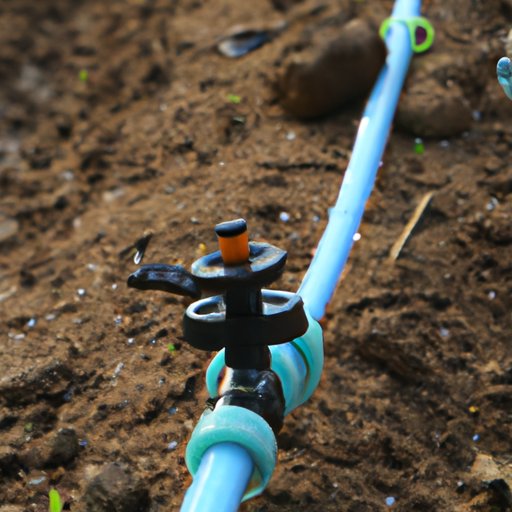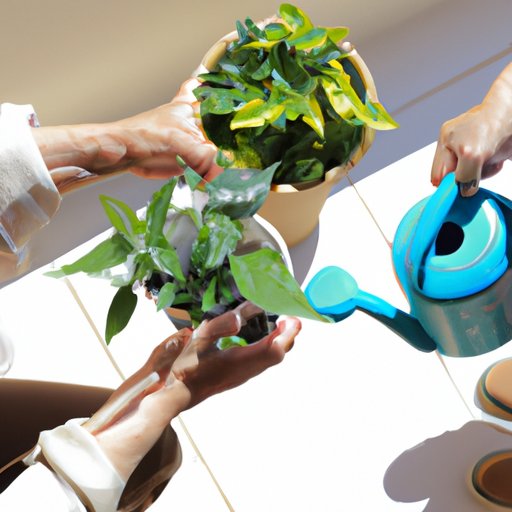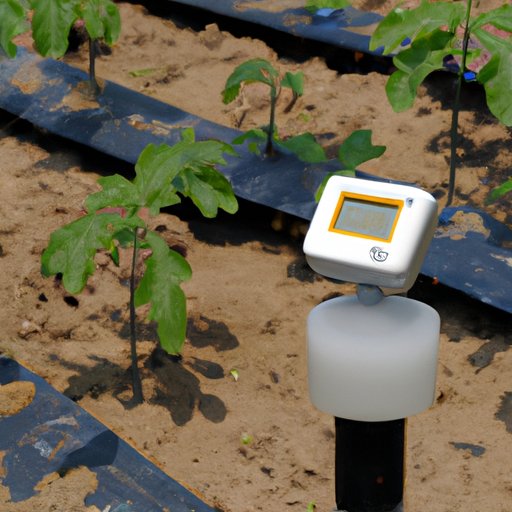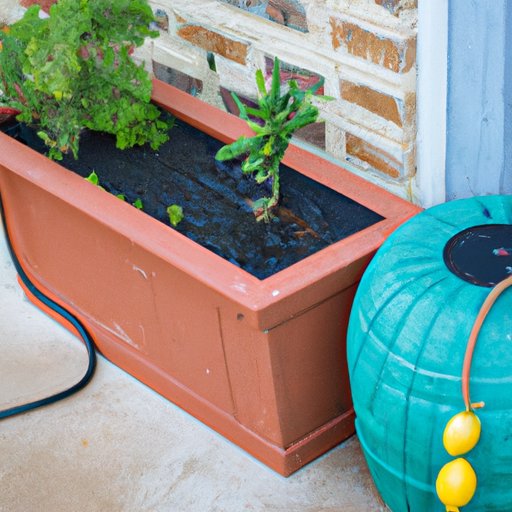Introduction
When you go away on vacation, it can be difficult to know how to keep your outdoor potted plants watered and healthy. This article will provide tips on how to ensure that your plants stay hydrated while you are away, so that they will remain healthy and beautiful when you return.
Choose Drought-Tolerant Plants
The best way to keep your plants watered while you are away is to choose plants that are drought-tolerant. These types of plants are more resilient and able to survive without regular watering. They are also better suited to withstand extreme temperatures, which can be an issue if you are away in the summer months.
Some examples of drought-tolerant plants include succulents, cacti, sedums, and yuccas. These plants are ideal for hot, dry climates and require minimal maintenance. When selecting plants for your outdoor pots, look for ones that are labeled as “drought-tolerant” or “low-water.”

Use an Automatic Drip Irrigation System
An automatic drip irrigation system is an effective and efficient way to keep your plants watered while you are away. This type of system works by slowly releasing water directly to the roots of the plants through a series of hoses and emitters. The water is released at a rate that is slow enough to ensure that it is fully absorbed by the plants, but fast enough to keep them hydrated.
To install a drip irrigation system, you will need to purchase the necessary components, such as tubing, emitters, connectors, and a timer. You will then need to connect these components together according to the manufacturer’s instructions and set the timer to run at intervals that correspond with the needs of your plants.
Install a Water Reservoir on the Pot
Another way to keep your plants watered while you are away is to install a water reservoir on the pot. A water reservoir is a plastic container that sits inside the pot and stores water. It will slowly release water over time, providing your plants with a consistent supply of moisture.
To install a water reservoir, you will need to purchase a container that fits the size of your pot. Then, drill holes in the bottom and sides of the container and place it inside the pot. Fill the container with water and cover it with soil. The soil will help to keep the water from evaporating too quickly.
Add a Self-Watering Spike to Each Plant
A self-watering spike is a great way to ensure that your plants are getting enough water while you are away. This device consists of a long tube with a spike at one end and a reservoir at the other. The spike is inserted into the soil and the reservoir is filled with water. As the soil dries out, the water will be released from the reservoir and absorbed by the plant.
To install a self-watering spike, you will need to insert the spike into the soil near the base of the plant. Then, fill the reservoir with water and attach it to the spike. Make sure to check the reservoir regularly to make sure it is full.
Place Mulch Around the Plants
Adding a layer of mulch around your plants is another way to help keep them hydrated while you are away. Mulch helps to retain moisture in the soil, preventing it from drying out too quickly. It also helps to keep weeds at bay and insulate the soil from extreme temperatures.
To mulch your plants, spread a 2-3 inch layer of organic material around the base of each plant. Choose materials such as wood chips, straw, or shredded leaves. Make sure to replenish the mulch every few weeks to ensure that it is always fresh and doing its job.

Ask a Neighbor or Friend to Water the Plants
If you are going away for an extended period of time, it may be a good idea to ask a neighbor or friend to water your plants while you are away. This will give you peace of mind knowing that someone is taking care of your plants and ensuring that they are getting enough water.
When asking someone to water your plants, make sure to explain exactly what needs to be done and how often. Give them detailed instructions on how to water the plants correctly and provide them with any supplies they may need, such as a hose or watering can.

Invest in a Soil Moisture Sensor to Monitor the Plants
Finally, investing in a soil moisture sensor is a great way to monitor the moisture levels of your plants while you are away. This device measures the amount of moisture in the soil and sends a signal to a receiver when the soil becomes too dry.
To use a soil moisture sensor, simply insert the probe into the soil near the base of the plant and connect it to the receiver. You can then set the receiver to alert you when the soil reaches a certain level of dryness, so that you can take action if needed.
Conclusion
Keeping your outdoor potted plants watered while on vacation doesn’t have to be a challenge. By choosing drought-tolerant plants, using an automatic drip irrigation system, installing a water reservoir, adding self-watering spikes, placing mulch around the plants, asking a neighbor or friend to water them, and investing in a soil moisture sensor, you can rest assured that your plants will stay hydrated while you are away.
Remember to always check the soil moisture levels before you leave, and don’t forget to turn off the water supply when you get back. With these tips, you can enjoy a worry-free vacation knowing that your plants are taken care of.
(Note: Is this article not meeting your expectations? Do you have knowledge or insights to share? Unlock new opportunities and expand your reach by joining our authors team. Click Registration to join us and share your expertise with our readers.)
